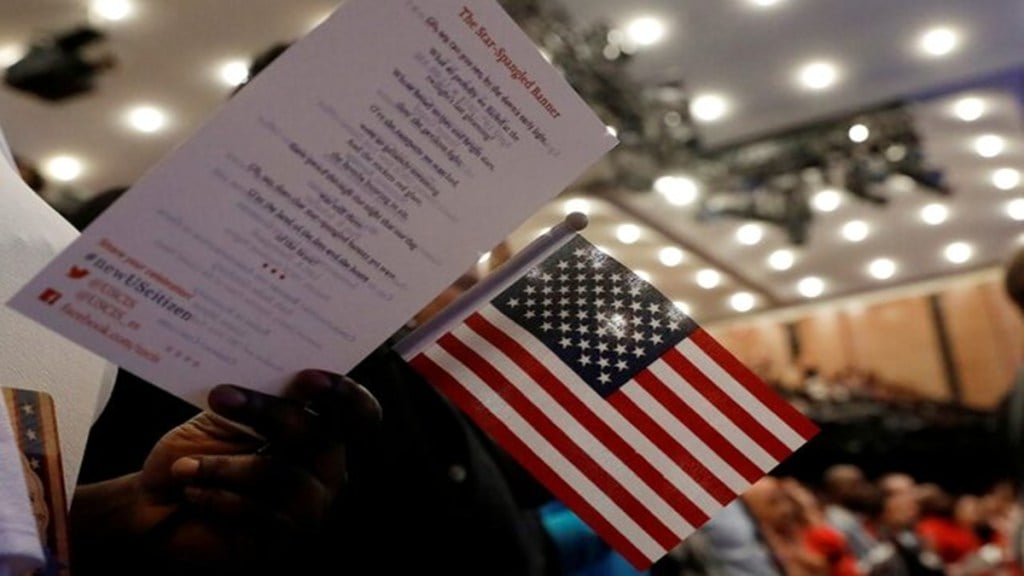Green card holders planning to bring family members or relatives to the United States will now face new immigration rules. The US has revised its immigration policy to provide clearer and more detailed regulations for family-based green card petitions.
U.S. Citizenship and Immigration Services issued policy guidance in the USCIS Policy Manual that will enhance the capability to screen and vet family-based immigrant visa petitions. The USCIS Policy Manual is the agency’s centralized online repository for USCIS’ immigration policies.
USCIS is revising rules to ensure the authenticity and legality of family relationships, particularly marriages, in green card petitions, including eligibility, paperwork, interviews, and final decisions.
The changes aim to improve officers’ review of cases, ensure the legality of family relationships, particularly marriages, by providing clearer explanations about qualifications, filing requirements, and proof documents, while also reorganizing or eliminating sections.
This guidance, contained in Volume 6 of the Policy Manual, is effective immediately and applies to requests pending or filed on or after the publication date.
Green Card Family Sponsorship
The Immigration and Nationality Act (INA) provides that U.S. citizens, U.S. nationals, and lawful permanent residents (LPRs), as well as those holding U.S. Green Cards, may petition for certain foreign relatives to immigrate to the United States. Lawful permanent residents (LPRs), also known as green card holders, are foreigners who are lawfully authorized to live permanently within the United States.
For this, they need to file a Petition for Alien Relative (Form I-130). Certain alien relatives include immediate relatives of US citizens, as well as relatives who fall into a family-based preference category.
Family-based immigration accounts for most new LPRs, with immediate relatives alone making up approximately 40 percent of all new LPRs annually.
Fraudulent, frivolous, or otherwise non-meritorious family-based immigrant visa petitions erode confidence in family-based pathways to lawful permanent resident (LPR) status and undermine family unity in the United States.
New Update
This guideline streamlines existing policy, providing officers with clear and consistent instructions. This guidance will improve USCIS’ capacity to vet qualifying marriages and family relationships to ensure they are genuine, verifiable, and compliant with all applicable laws.
- This guidance clarifies eligibility and adjudication requirements, such as the need for an interview for family-based immigrant visa petitions and the possibility of receiving a Notice to Appear (NTA) to ensure benefit integrity and prevent fraud.
- This update includes guidelines on family-based immigrant visa petition approvals and denials.
- Incorporates existing guidance on general eligibility criteria and filing and documentation requirements for family-based immigrant petitions.
- Explains how USCIS adjudicates family-based immigrant visa petitions that are filed with related petitions or multiple petitions.
- Explains circumstances in which USCIS authorizes the U.S. Department of State (DOS) to accept a Form I-130 petition filed directly with DOS by a U.S. citizen for an immediate relative, including for petitions filed by U.S. military and certain U.S. government personnel stationed or assigned outside the United States, as well as temporary authorizations for large-scale disruptive events.
- Incorporates existing guidance explaining when USCIS routes an approved petition to the DOS National Visa Center, including circumstances where the beneficiary applied to adjust status but USCIS becomes aware of the beneficiary’s ineligibility to adjust.
- Explains when USCIS requires interviews for family-based immigrant visa petitions.
- Explains that USCIS may issue an NTA if the alien beneficiary is otherwise removable since a family-based immigrant visa petition accords no immigration status or relief from removal.
